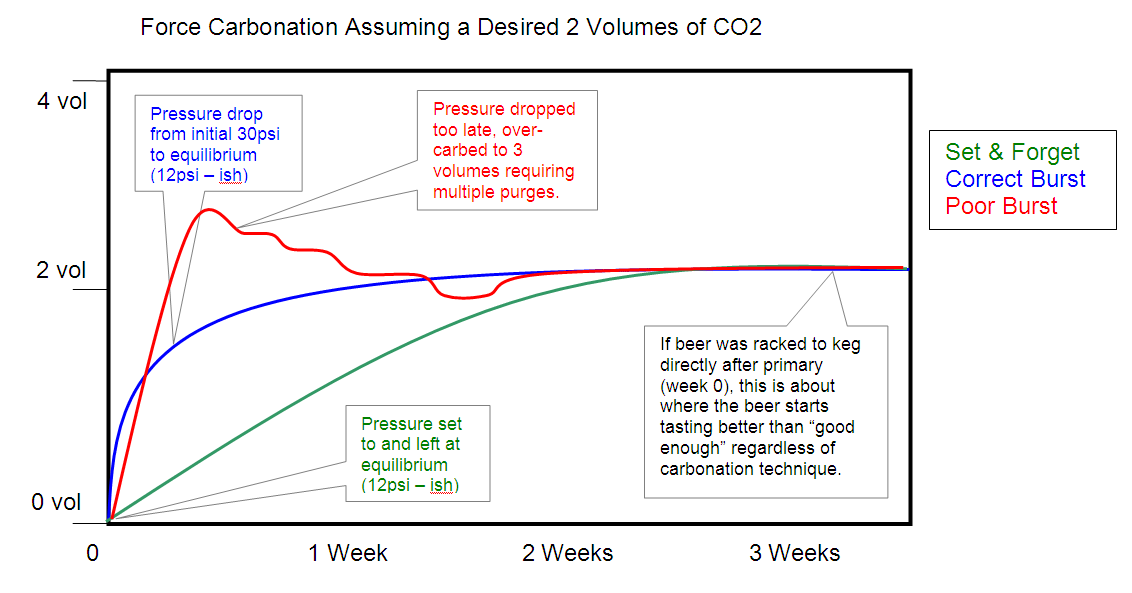You can put a gas QD on a liquid post, but they are a little loose, and don't seal well. You could potentially lose a lot of CO2 in a hurry doing this. If you want to carbonate thru the liquid post, put a liquid QD on the CO2 line.
The other risk of feeding CO2 into the liquid post is: beer blow back into your regulator. You have to have check valves, and trust them completely, if you are going to do this.
Bubbling the CO2 thru the beer (by feeding gas into the liquid post) should carbonate a little faster, but I haven't seen any hard data on this. If time is an issue that using the 30 psi for 36 hrs, then drop to chart pressure works in about 3 days. It's what I do.
Brew on
































![Craft A Brew - Safale BE-256 Yeast - Fermentis - Belgian Ale Dry Yeast - For Belgian & Strong Ales - Ingredients for Home Brewing - Beer Making Supplies - [3 Pack]](https://m.media-amazon.com/images/I/51bcKEwQmWL._SL500_.jpg)






















